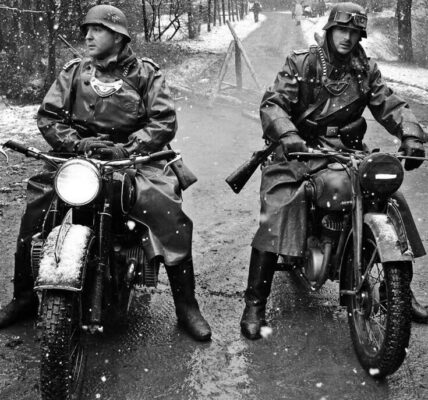
Aufstellung einer 8,8-cm-Flak der deutschen Luftwaffe an der Ostfront während des Unternehmens Barbarossa, Sommer 1941. Fotograf: Artur Grimm. Beim Überfall auf die Sowjetunion setzte Deutschland die 8,8-cm-Flak in 51 gemischten Flugabwehrbataillonen ein. Dabei handelte es sich meist um der Luftwaffe unterstellte Einheiten, die dem Heer auf Korps- oder Armeeebene angegliedert waren, mit ungefähr einem Bataillon pro Korps. Die Waffe war an der Ostfront im Dauereinsatz. Das Auftauchen der hervorragenden Panzer T-34 und später KW schockierte die deutschen Panzerbesatzungen und Panzerabwehrteams, die die Panzerung der sowjetischen Panzer mit den Standardkanonen von 37 mm und 50 mm nur auf eine Entfernung von etwa 180 Metern durchdringen konnten, während die russische 76-mm-Kanone bis zu 900 Meter effektiv war.



The 88 mm gun (eighty-eight) was a and gun from . They were widely used by Germany throughout the war. It was one of the most recognizable German weapons of the war. Developments of the original models led to a wide variety of guns.
The name applies to a series of anti-aircraft guns officially called the 8,8 cm FlaK 18 , 36 or 37. FlaK is a contraction ofFlugzeugabwehr-Kanone or Flugabwehr-Kanone (hence the capital K) meaning anti-aircraft cannon, the original purpose of the eighty-eight. In informal German use, the guns were universally known as the Acht-acht (8-8), a contraction of Acht-komma-acht Zentimeter (German: „8,8 cm” – comma being used as the decimal separator in German).

The name could also describe newer and more powerful models, the FlaK 41 and 43, although these were different weapons. Compared to the British QF 3.7 inch AA gun or United States 90 mm gun models, the 88 was built in very large numbers, and when deployed in the anti-tank role, it was mounted on a versatile base from which it could be fired without unlimbering.
Its success as an improvised anti-tank gun led to a separate line of guns for anti-tank use, the Panzerabwehr-Kanone (PaK) 88 (German: „anti-tank gun”) and as the main armament for tanks such as the Tiger I, the 8.8 cm KwK 36, with the „KwK” abbreviation standing for Kampfwagenkanone („fighting vehicle cannon”).




